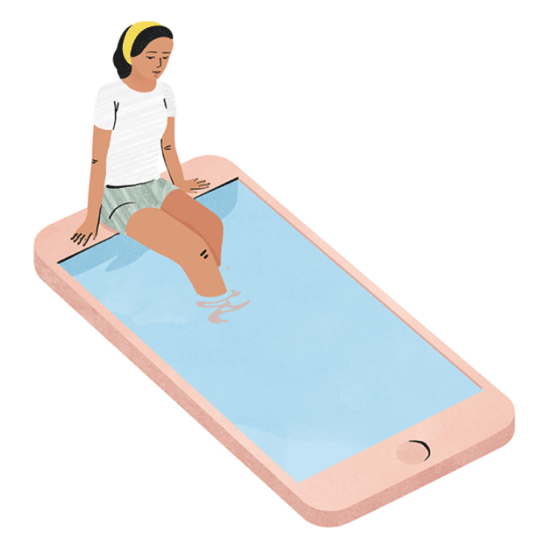New Data: How Youth Use Social Media
Topics

A recent national survey, Digital Health Practices, Social Media Use, and Mental Well-Being Among Teens and Young Adults in the U.S.Exit Disclaimer, conducted by Victoria Rideout and Susannah Fox, surveyed more than 1,300 U.S. teens and young adults, ages 14 to 22, to better understand:
young people’s self-described use of online health information and digital health tools, including those used for peer-to-peer health exchanges
the associations between self-reported social media use and mental well-being among teens and young adults.
You can read more in Susannah’s article on Linkedin: Digital health practices among teens and young adults in the U.S.Exit Disclaimer . Here are some key findings:
Online health website and apps are popular among teens
87% of all teens and young adults (hereafter, teens) say they have gone online for health information.The top five topics searched are fitness (63%), nutrition (52%), stress (44%), anxiety (42%), and depression (39%).
64% of all teens say they have used mobile apps related to health, including those for fitness, sleep, meditation, and medication reminders.
Teens use technology to connect with their peers about health
The majority (61%) say they have read, listened to, or watched other people share about their health experiences online, whether in podcasts, TED talks, or YouTube videos.
About four in ten (39%) say they have gone online to try to find people with health conditions similar to their own, using methods such as participating in online forums or closed social media groups on specific issues, doing hashtag searches on social media, or following people with similar health conditions.
One third (33%) of all teens have successfully connected with health peers online, and 91% of them say the experience was helpful.
One in five (20%) teens report having connected with health providers online, through tools like online messaging, apps, texting, and video chat.
Teens, especially girls, reporting positive experiences from using social media
Respondents who reported moderate to severe symptoms of depression were nearly twice as likely as those with no symptoms to say that social media helps connect them to useful support and advice when they feel depressed, stressed or anxious (25% vs. 13%).
Teens are more likely to report receiving positive than negative feedback from others on social media: 32% say they “often” get positive comments from others compared to just 3% who say they “often” get negative comments.
Teenage girls and young women are more likely than males their age to go online for information about anxiety (55% vs. 29% of males) or depression (49% vs. 27% of males).
LGBTQ teens turn to social media more than their straight peers
Three out of four LGBTQ youth (76%) have looked online for information about depression, compared to 32% of straight youth.
Seventy-five percent of LGBTQ youth have looked for information about anxiety, compared to 36% of their straight peers; and 68% of LGBTQ youth have looked for information on stress, compared to 40% of straight youth.
This research shows there are opportunities for HIV service organizations to develop innovative ways of connecting with youth, providing them with vital information on HIV, and even supporting them through social media.
According to Erin McKelle, Communications Coordinator at YTHExit Disclaimer, “The fact is, almost all young people are seeking health information online. We at YTH understand that young people are online and seek to meet them where they are at, in order to create better health outcomes. We believe that all health and wellness organizations targeting youth should be doing the same.”
In addition, it is important to consider these findings in light of the impact that stigma may have on LGBT youth, how stigma can increase risky behaviors that in turn influences their likelihood of HIV infection, and the role that social media plays in contributing to that stigma. However, it is also important to reflect on how social media and access to health information online can also have a positive effect.
For more information about how you can better use social media to reach youth with HIV resources, make an appointment for HIV.gov’s Virtual Office Hours today!